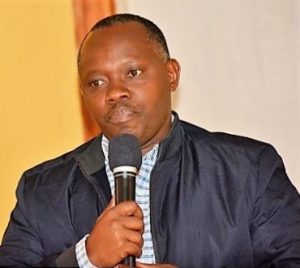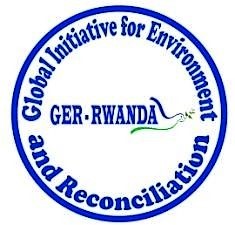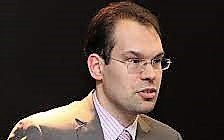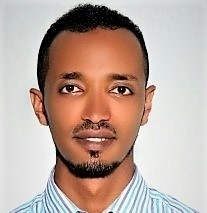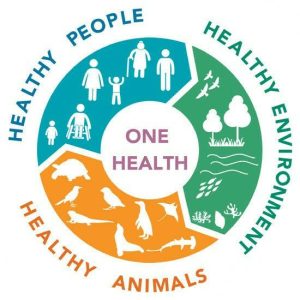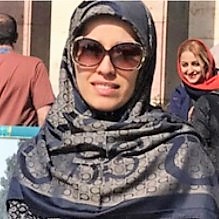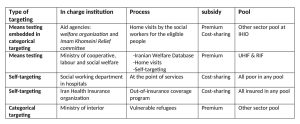…With the pre-COVID projected evolution of the workforce of primary care practitioners and the ever-increasing demand for healthcare, it already will not be possible to provide the same services as today. In the future, the first contact with the health care system might not be with your family doctor or nurse practitioner, but with an artificial intelligence. Routine visits and screening will be automated and a personal interaction will only be reserved for “referred” cases.
Obviously, this situation does not provide the medical professionals the time to analyse and assess all the extra medical information from wearables and others, a big part as raw data, that an individual might possess…
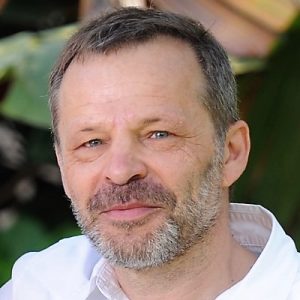
By Tony De Groote
Health System Strengthening – Health Policy – International Development
Antwerp, Flemish Region, Belgium
Changes in the Provision of Primary Health Care
A More Empowered Role for the Individual
The Primary Health Care approach still rules
The advantages of Primary Health Care (PHC) are well established. Promoted by the World Health Organisation at the Alma Ata conference in 1978 to achieve “health for all by the year 2000”, PHC has been confirmed as the best approach to organise health systems. Not all countries have adopted the concept completely but those that did can show much better health outcomes, equity, cost-efficiency and resilience than those that didn’t.
A key role for correct implementation of PHC is the primary care provider. They constitute the point of entry to the health system, or, in other words, the first contact of the user with the national health system. They provide the full spectrum of promotive, preventive, curative, rehabilitative and palliative care or refer to specialist care when needed. Key aspects are continuity of care and the synthesis function. Primary care providers can be family doctors, general doctors, nurse practitioners, nurses, etc. or a team of medical and para-medical professionals.
But the Alma Ata conference happened more than 40 years ago and the world has changed tremendously since then. The biggest changes with an effect on health care over the last years are probably the various effects of ageing of the population, increasing prevalence of chronic diseases, climate change, but also globalisation, the expansion of the internet, the emergence of artificial intelligence and other technological innovations.
The Astana declaration of 2018 reconfirmed the basic principles of Alma Ata but included, among others, empowerment of individuals and communities, and health literacy. The usefulness of (digital) technology to improve the health of the population is recognised and promoted. “Through digital and other technologies, we will enable individuals and communities to identify their health needs, participate in the planning and delivery of services and play an active role in maintaining their own health and well-being.”
Wearables and telemedicine
Wearables and medical devices for home use offer a source of medical information to an individual without involvement of a medical professional. Holter monitoring, prescribed and provided by cardiologists, has been around for some time. Home blood pressure manometers, blood glucose meters, apnoea monitors, and others have been purchased mostly on advice from a health care provider and the result logs were presented to medical professionals for analysis.
But the explosive growth in recent years in the use of smartwatches, fitness trackers and other wearables has not happened under the impulse of the medical profession. The usefulness of these data collected at home is still under debate: some doctors argue that it provides insightful information about their patients (mobility and calorie usage, heart rate monitoring, quality of sleep, …), while others are weary to use the data because the devices are not approved by FDA or other regulatory agencies. Yet, the quality and reliability of the recorded data will rapidly improve and official endorsement will undoubtedly occur in the very near future.
Telemedicine (or the broader term telehealth) is not a new practice. The most cited starting point of telemedicine dates from the mid-1950s when the Nebraska Psychiatric Institute implemented closed-circuit television to remotely monitor patients and later expanded this to provide group therapy, long-term therapy and medical student training. But already in 1928, the Aerial Medical Service in Australia used the telegraph and radio communication to provide medical consultations to remote areas in the country.
Limited geographical accessibility used to be the main reason for the use of telemedicine and it remained an exceptional measure. In 2015, approximately 800,000 telemedicine consultations were performed in the United States. However, according to a CDC report, there were an estimated 883.7 million physician visits in the United States. Telemedicine made up less than 0.1% of all consultations.
During the COVID-19 pandemic, this changed completely. During the lockdown in France, the percentage of teleconsultations (phone or video) peaked at 27% of all consultations. It has dropped again after the lockdown but its numbers are still hundreds of times higher than in the pre-COVID-19 age. Online consultations during the COVID-19 pandemic started as a need to limit potential exposure, both for the patient and the medical professional. The convenience for both parties is very much appreciated and the quality of care and outcome does not seem to diminish for routine contacts. It is thus worthwhile to maintain and even expand this practice in the future.
Once online medical contacts with medical practitioners become more commonplace, there is no reason to believe that it will remain limited to your own family doctor and specialists.
A simple internet search for “online medical/doctor consultations” yields an impressive number of websites where international general practitioners and specialists are offering their services to the general public by chat, call or video call. The advertising slogans for these sites mention the advantage of getting a second opinion, the convenience of not having to leave your house and short waiting lists.
Online consultations can prove useful for users in a health system with a strict gatekeeper function, lack of specialists, or difficult geographical or even financial accessibility. But these online companies are private enterprises and by no means limit the use of their services to “legitimate reasons”, nor seem they to be strictly controlled by any national or international regulatory body. Their reach is truly global across international borders and the only restriction appears to be language barriers.
Registration to make an appointment is exclusively done by the individual and no referral by a medical professional is needed. It is also completely up to the individual to decide if he/she will share the outcome of this consult with their regular primary care provider.
Shortage of medical professionals
At the same time, there is a global shortage of medical professionals. This phenomenon can be observed worldwide, in low-, middle- and high-income countries, and is most precarious for those roles that can be labelled as primary care practitioners: family doctors, nurse practitioners, and others. The reasons for this shortage are multiple and relate to increased demand for health care by ageing of the population and the rise in prevalence of chronic diseases. This increased demand is exacerbated by a deterioration of all determinants of workforce numbers: entry, retention and exit. The COVID-19 pandemic has accelerated the projected shortage by a mass exodus of medical professionals through burnout, death and termination, or loss of employment due to the deteriorating economic situation. If fewer students will decide to pursue a medical career now that the pandemic has highlighted the dangers and heavy workload of the medical professions, this will only become evident in the coming years.
With the pre-COVID projected evolution of the workforce of primary care practitioners and the ever-increasing demand for healthcare, it already will not be possible to provide the same services as today. In the future, the first contact with the health care system might not be with your family doctor or nurse practitioner, but with an artificial intelligence. Routine visits and screening will be automated and a personal interaction will only be reserved for “referred” cases.
Obviously, this situation does not provide the medical professionals the time to analyse and assess all the extra medical information from wearables and others, a big part as raw data, that an individual might possess.
“Patient” empowerment
“Health” is a much wider concept than “health care”. Most “health actions” have always been outside of the formal healthcare system in the form of self-care (lifestyle choices, self-treatment, OTC medication, etc.) and lay care by others in their social circles. The difference is that these out-of-the-formal-health-system actions from wearables and telemedicine now generate medical information in need of more specialised attention and interpretation.
This represents a shift in power for decision-making on health issues from the healthcare system towards the individual. While the integration function of the primary health provider allowed them to have a global overview of the medical situation of their patient and take the lead in the decision-making process, this will not be the case anymore. It will be increasingly more the individual who will be the guardian of his information and will decide what to do with it. The role of the primary care provider will change from coordinator of the medical care for the individual to the role of a “trusted advisor”. This will mean a further evolution in the principle of provision of health care beyond “patient-centred care” to a more active role of the individual in the process or “individual-led care” or “person-led care”.
The road ahead
How will the individual be able to make sense of all these health data that are now available exclusively to him or her? The asymmetry of information in the doctor-patient relationship due to the superior medical knowledge of the medical professional includes also access to information and, especially, the interpretation of the data. As the individual doesn’t have the necessary expertise and as the shortage of medical professionals limits the provision of personal assistance, support will have to be found in logarithms and artificial intelligence. But these tools will have to be “smart” or at least smarter than they are now. To offer a viable alternative to the synthesis function of the primary care physician, it is not sufficient to have a simple, isolated analysis of the variations of the blood pressure of an individual, or the evolution of the blood glucose levels over time. There should be a more comprehensive analysis of all the raw, home-based data (blood pressure, blood glucose, sleep quality, stress levels, etc) together with all other relevant information (online consults and second opinions, ongoing treatment at a distance, etc), and taking into account their mutual interactions. And the final evaluation should be linked with the personal social, cultural, and economic determinants of the individual. Only when this is available, will the individual be able to make the most of this shift in access to information and be able to make valuable informed decisions about his or her own health.
But who should we trust for developing these algorithms? How can we avoid that the analysis is not skewed towards increasing profit of the developer but maintains the best interest of the individual as the objective? Governments and national and international public institutions will have to assume this role and already now start taking responsibility for this important task of safeguarding the health of the population. In the long run, it will probably even be more cost-efficient than trying to remedy the shortage of medical professionals. And in a changing landscape of increased automatisation and globalisation, it might even be the most appropriate solution.
